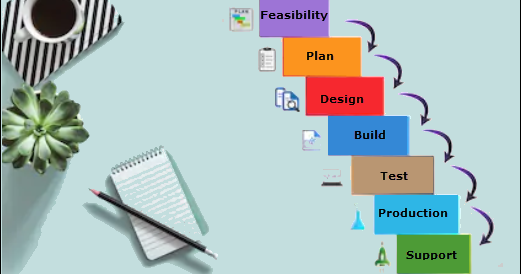

Resources support for waterfall project management install#
For instance, you cannot install the roof until your walls are ready.

Given this background, it found great relevance in manufacturing and construction, where the subsequent steps are heavily reliant on the completion of the previous ones. Further, the flow of the project is unidirectional that is, once a phase is over, it terminates, and it is not possible to revisit it. The project will transition from one phase to another only when the previous one is absolutely complete. Here, the entire project lifecycle is divided into clearly defined discrete stages, with one cascading into the other and so on. What is waterfall project management?Īs mentioned previously, the waterfall project management method follows a sequential and linear approach to project management. In this post, we take a detailed look at what is the waterfall approach in project management and why and when you should be using it.

However, it requires extensive planning, documentation, and implementation to get a taste of success. Waterfall project management is a linear project management methodology that progresses through distinct stages to reach the end. Have you ever wanted your project to flow smoothly and fluidly like water? Well, then, the waterfall project management methodology is what you need. What are the 5 stages of the waterfall project management model?.What are the differences between waterfall and Agile project management?.What are the benefits of using waterfall project management?.FAQs about waterfall project management.Who should use waterfall project management?.Limitations of waterfall Project Management.Advantages of waterfall project management.Phases of waterfall project management methodology.


 0 kommentar(er)
0 kommentar(er)
